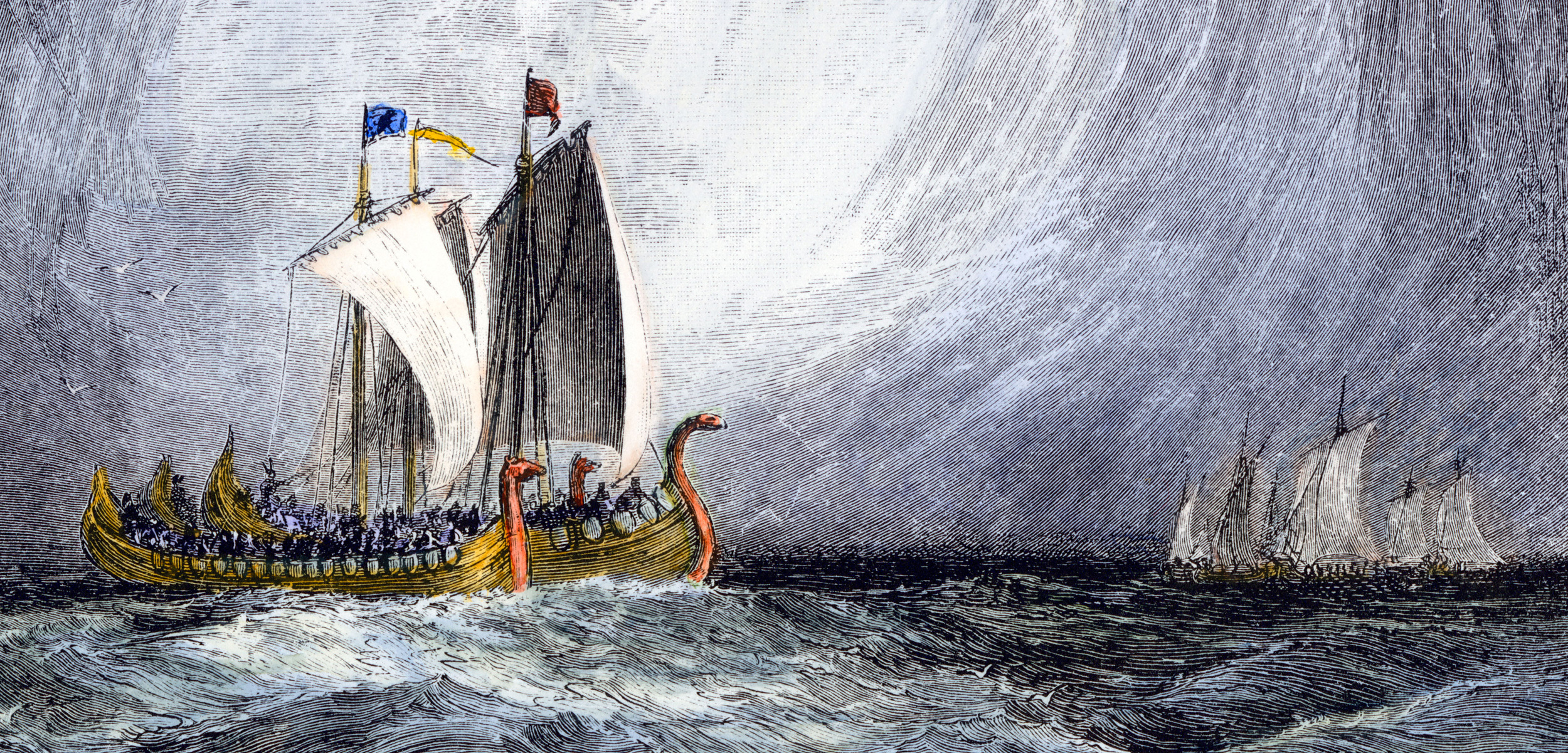Meals on Keels
Throughout history, dining at sea has called for creativity and a strong stomach.
Article body copy
A successful ocean voyage has always required more than a reliable compass and a solid ship—decent grub for sailors is a must, too. Throughout history and across the world, seafaring groups crafted maritime meals that not only satisfied their needs, but also reflected their cultural experiences at sea. From Vikings and their salted fish to Captain Cook and his sauerkraut, here are five examples of how ocean explorers ate at sea.
Polynesian Expansionists—A Penchant for Protein
If any group can lay claim to mastering the art of dining at sea, it’s the 11th-century Polynesians. While some seafarers suffered through meals of stale salted meats and battled scurvy, the Polynesians feasted on a smorgasbord of nutritious provisions packed into their double-hulled canoes for voyages to new islands. For protein, they relied on freshly caught fish, crustaceans, and octopuses—if they didn’t catch much, they sometimes slaughtered the pigs, dogs, and chickens they were transporting for breeding stock in new territory. Medium-sized vessels measured 15 to 18 meters in length and carried two dozen men; some even had moveable hearths lined with stone or coral so voyagers could cook safely at sea. They roasted meats and some plants, and they often ate fish raw or dipped in salt water. The men kept staple crops—such as breadfruit and taro—on hand, along with stockpiles of preserved fruits and vegetables. These oceanic explorers also packed emergency foods with long shelf lives, including vitamin- and carbohydrate-rich pandanus palm paste and fermented breadfruit.
Vikings—Just Add Salt
With their far-flung voyages to Greenland and Newfoundland, the Vikings needed farnest, or voyage food, that could last for weeks or months. They mostly ate barley porridge, and butter, and sometimes they enjoyed dried halibut and cod, bread, and boiled or whey-preserved meat. Vikings fished when conditions allowed, and they usually hung their catches from the rigging, letting the salt spray from the frigid North Atlantic preserve them. Like most Europeans of the same era, the Vikings rowed ashore in a tender to cook on the beach and replenish their water supplies. Otherwise, they prepared cold meals on their ships. In the 11th century, sailors drew lots daily to determine who would be responsible for cooking, but later in the same century, Viking warships and trading vessels began taking on matsveinas, or paid cooks.
Captain Cook—Conquering Vitamin C
In 1740, Commodore George Anson left England with six ships and roughly 2,000 men on a voyage to the Pacific. But when he returned nearly four years later, only 700 of his sailors had survived the epic journey—scurvy had claimed most of the others. Caused by vitamin C deficiency, scurvy was the scourge of the British navy, and symptoms ranged from rotting teeth to rictus of the limbs. In 1753, Scottish naval surgeon James Lind deduced that a restricted diet like that of the average British sailor—hardtack, salted meat, and minimal fruits and vegetables—may be connected to the disease, and that ingesting citrus could cure it. When Captain James Cook sailed the South Pacific in 1768, he made an effort to take on fresh fruits and veggies whenever possible, but produce spoiled quickly in the ship’s hold. However, he had planned ahead, bringing along a few experimental foods in an attempt to ward off scurvy, including malt, citrus fruit concentrate, mustard, vinegar, and 3,565 kilograms of sauerkraut, which is rich in vitamin C. Thanks to Cook’s meal planning, none of his crew members died from scurvy on the voyage.
Polar Explorers—Pocketfuls of Pemmican
Hauling an ice sledge uphill by hand can burn up to 11,000 calories a day. Such grueling work gave early 20th-century polar explorers a penchant for hearty foods, and one of their preferred meals was pemmican. Created by indigenous groups of the Great Plains, pemmican is a calorific mixture of dried meat and fat, with berries sometimes added for flavor. Polar explorers paired pemmican with chocolate and biscuits, and sometimes they added it to oatmeal and water to make a stew called “hoosh.” Famous explorers often tinkered with their own pemmican recipes: Roald Amundsen preferred his with peas and oatmeal, while Captain Robert Falcon Scott’s recipe featured a hefty amount of protein, little fat, and minimal roughage.
Japanese Sailors—White Rice is Not Nice
In the late 19th century, an outbreak of beriberi tore through the Imperial Japanese Navy. In 1880, for instance, the disease—caused by a thiamine, or vitamin B1, deficiency— afflicted one out of three sailors in the nation’s fleet, crippling Japan’s ability to wage war at sea. Beriberi (the word comes from the Sinhalese term for “extreme weakness”) ravages muscles and nerves, causing atrophy, edema, paralysis, and, if left untreated, death. In 1880, doctor Kanehiro Takaki hypothesized that the disease could be attributed to the sailors’ low-protein diet. They primarily subsisted on polished white rice, which lacks protein and has one-tenth the thiamine as brown rice. Takaki convinced navy officials to provide sailors with a more balanced diet, including meat, fish, vegetables, and eventually barley, which helped nearly eliminate the disease from the navy.

